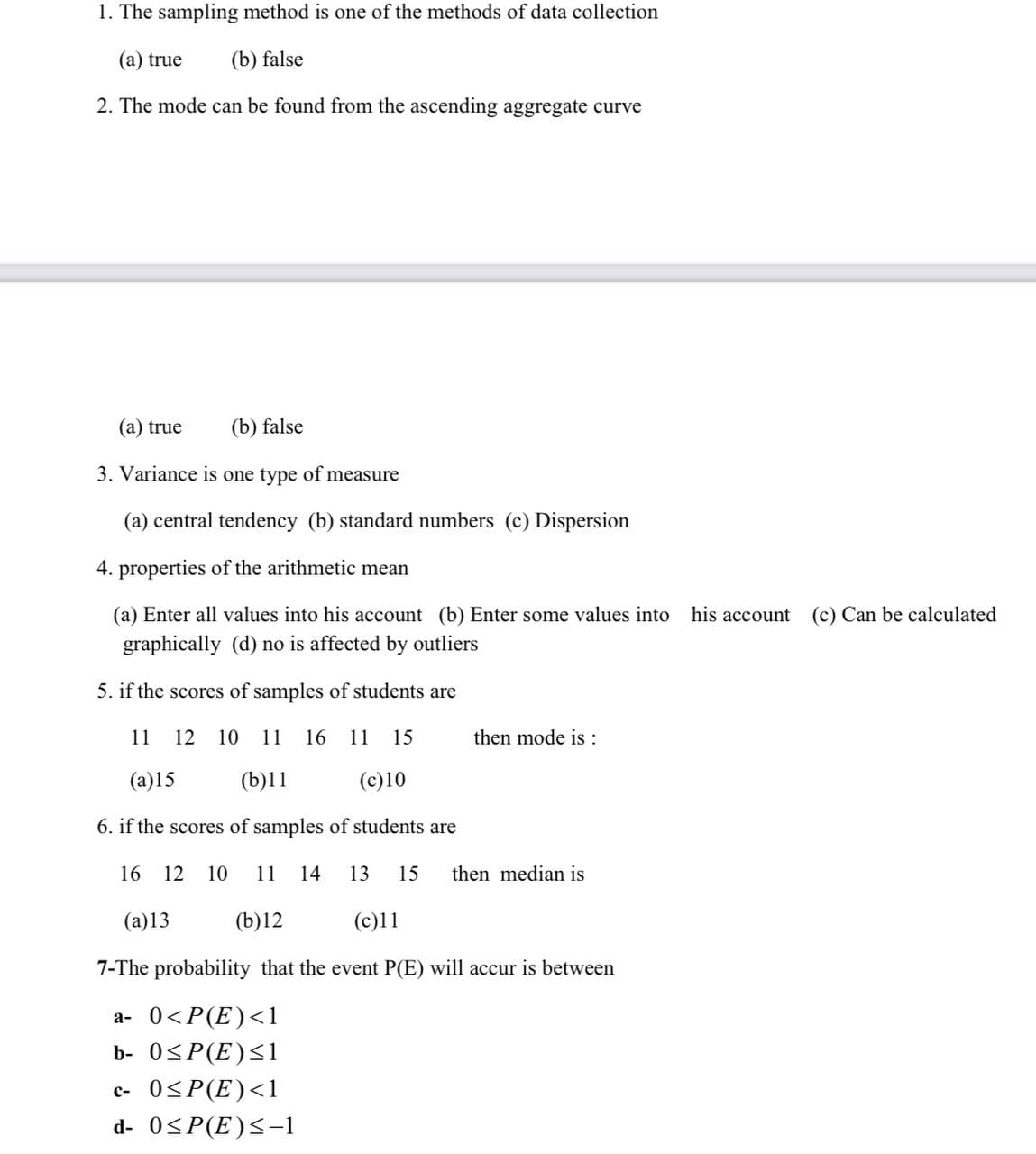1. The sampling method is one of the methods of data collection (a) true (b) false 2. The mode can be found from the ascending aggregate curve (a) true (b) false 3. Variance is one type of measure (a) central tendency (b) standard numbers (c) Dispersion
1. The sampling method is one of the methods of data collection (a) true (b) false 2. The mode can be found from the ascending aggregate curve (a) true (b) false 3. Variance is one type of measure (a) central tendency (b) standard numbers (c) Dispersion
A First Course in Probability (10th Edition)
10th Edition
ISBN:9780134753119
Author:Sheldon Ross
Publisher:Sheldon Ross
Chapter1: Combinatorial Analysis
Section: Chapter Questions
Problem 1.1P: a. How many different 7-place license plates are possible if the first 2 places are for letters and...
Related questions
Question
I need answer as soon as psp

Transcribed Image Text:1. The sampling method is one of the methods of data collection
(a) true (b) false
2. The mode can be found from the ascending aggregate curve
(a) true
(b) false
3. Variance is one type of measure
(a) central tendency (b) standard numbers (c) Dispersion
4. properties of the arithmetic mean
(a) Enter all values into his account (b) Enter some values into
graphically (d) no is affected by outliers
5. if the scores of samples of students are
11 12 10 11 16 11 15
then mode is :
(a)15
(b)11
(c)10
6. if the scores of samples of students are
16 12 10 11 14 13 15 then median is
(a)13
(b)12
(c)11
7-The probability that the event P(E) will accur is between
a- 0<P(E) <1
b- 0≤P(E) ≤1
c- 0≤P(E) <1
d- 0≤P(E)≤-1
his account (c) Can be calculated
Expert Solution
This question has been solved!
Explore an expertly crafted, step-by-step solution for a thorough understanding of key concepts.
Step by step
Solved in 4 steps

Recommended textbooks for you

A First Course in Probability (10th Edition)
Probability
ISBN:
9780134753119
Author:
Sheldon Ross
Publisher:
PEARSON


A First Course in Probability (10th Edition)
Probability
ISBN:
9780134753119
Author:
Sheldon Ross
Publisher:
PEARSON
